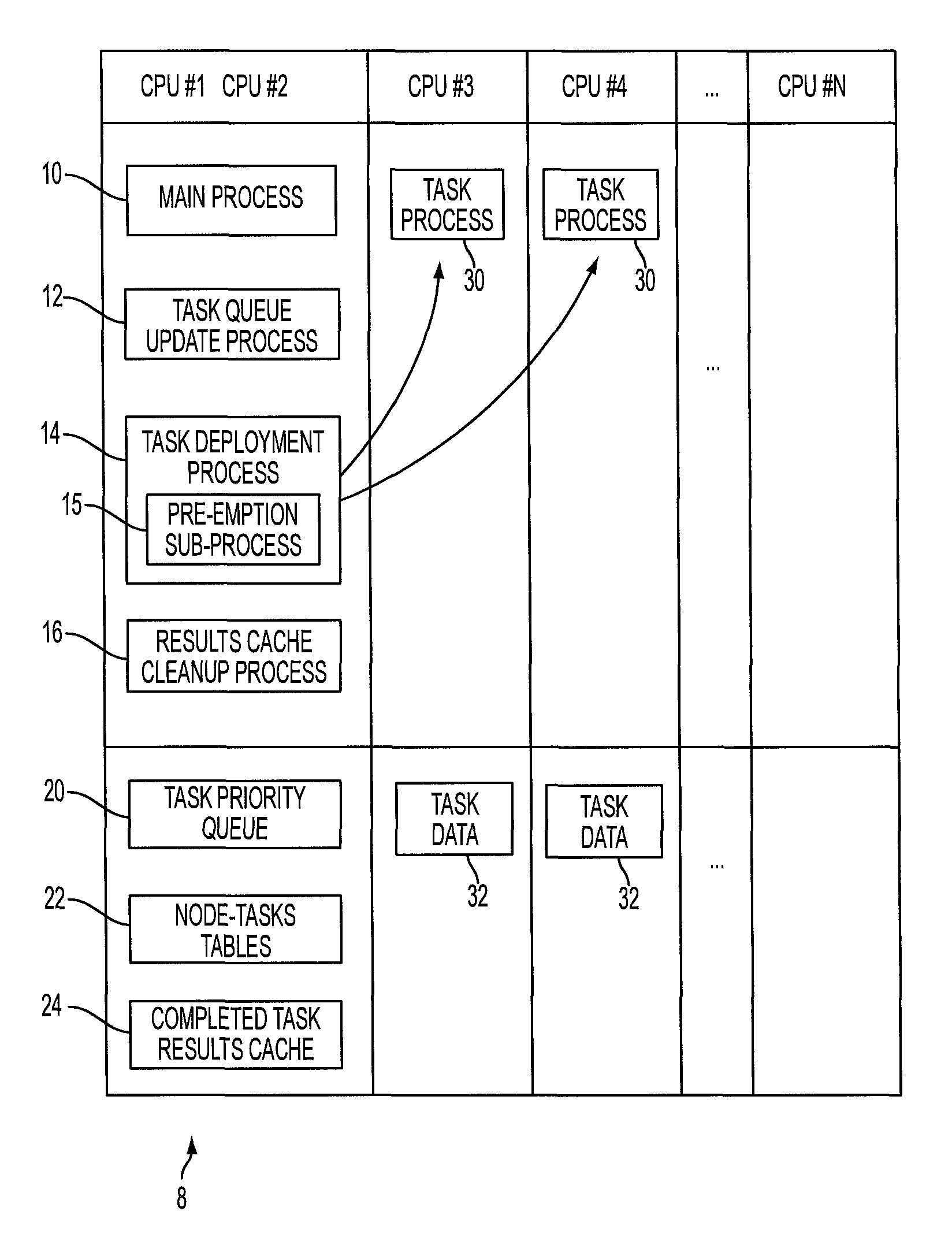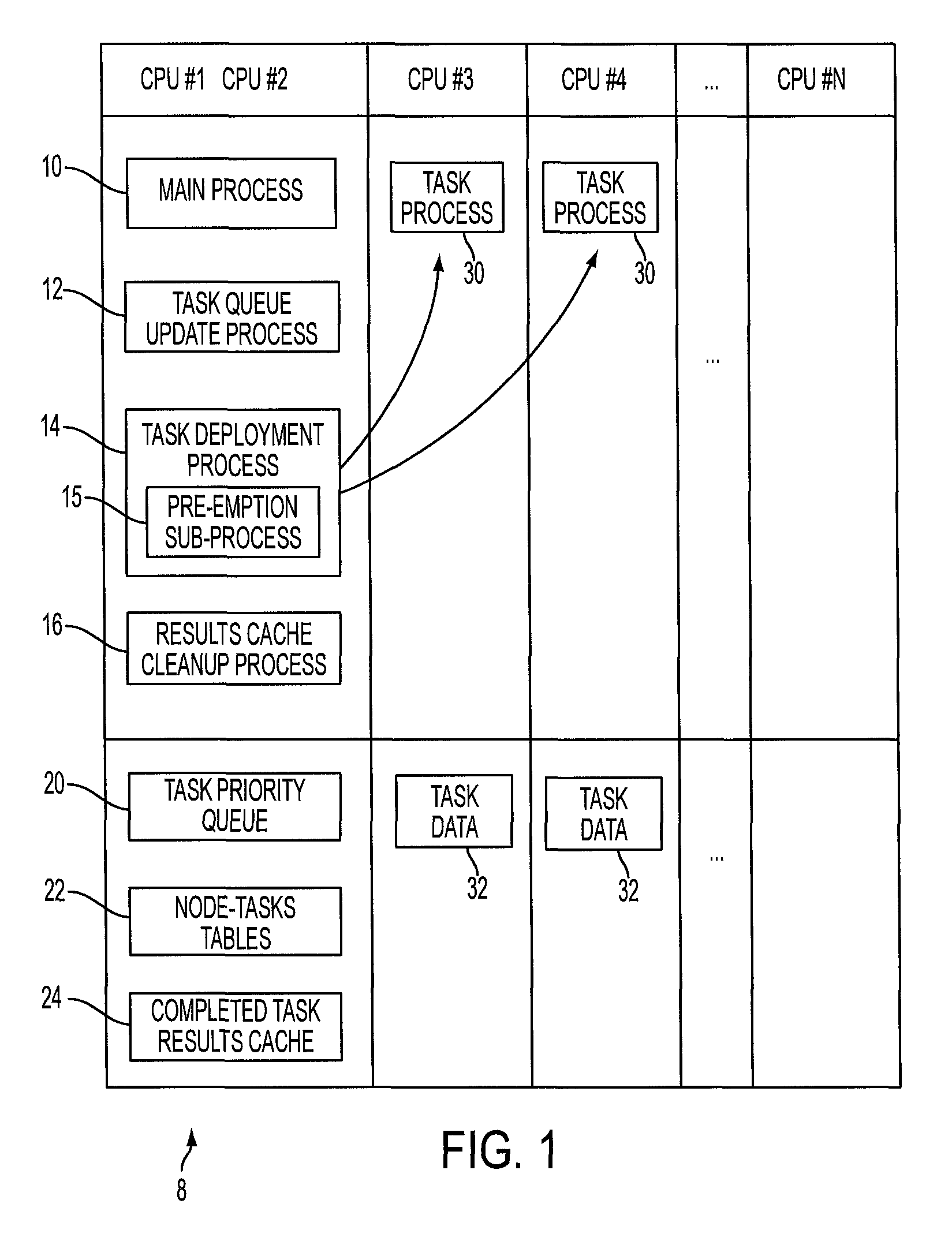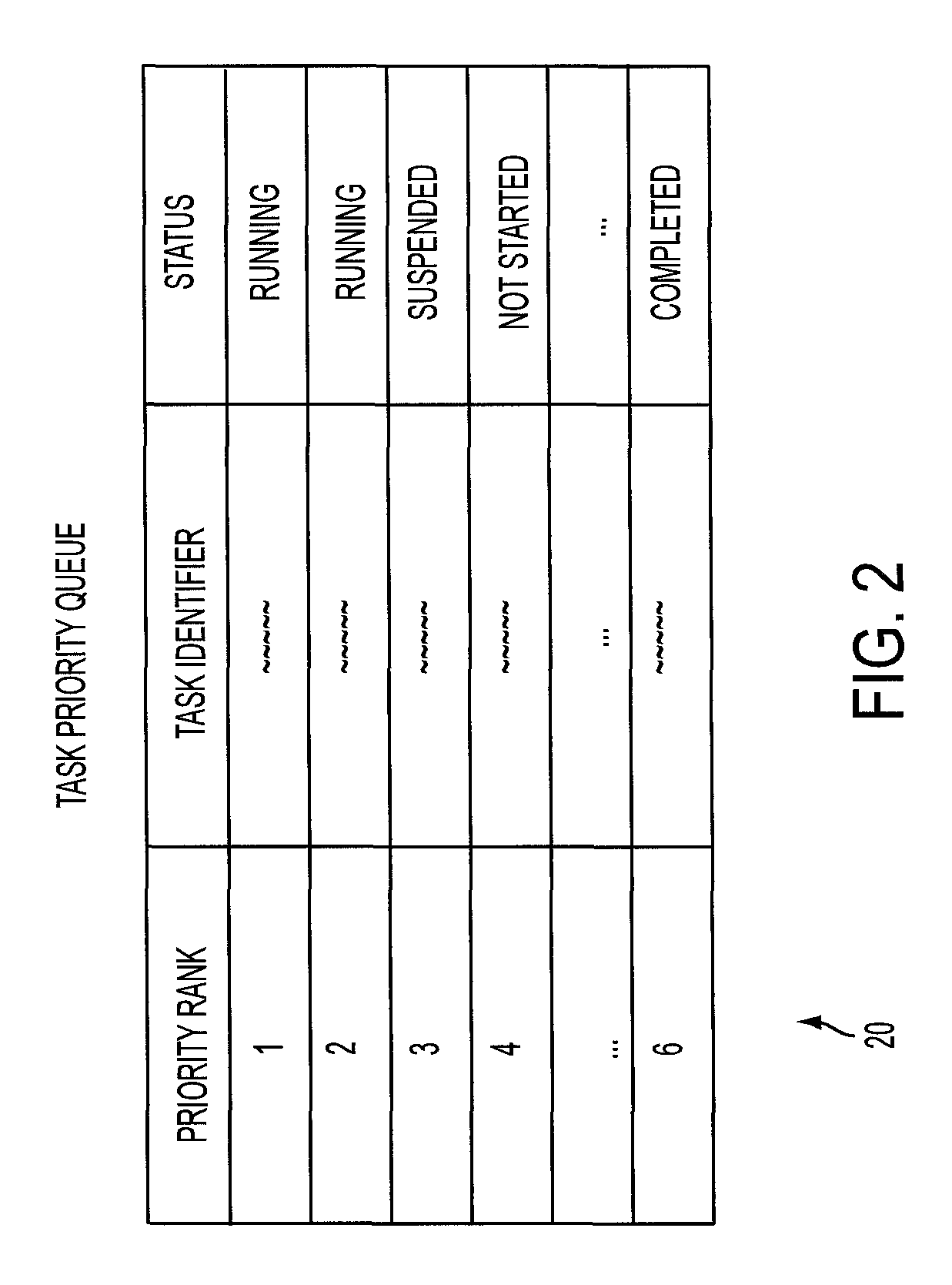Transportation network micro-simulation with pre-emptive decomposition
a transport network and micro-simulation technology, applied in the field of parallel computing arts, multi-core and multi-cpu computer arts, simulation arts, etc., can solve the problems of bottlenecks, speed gain attained by multi-cpu (i.e. parallel) processing is usually still far less than the theoretical gain, and the benefit of parallel processing is usually much lower
- Summary
- Abstract
- Description
- Claims
- Application Information
AI Technical Summary
Problems solved by technology
Method used
Image
Examples
Embodiment Construction
[0019]In a parallel computing system comprising a plurality of central processing units (CPUs) performing processes in parallel, a CPU can be underutilized if it enters a waiting state (i.e. lock) due to the need to receive a task result via the communication network from another CPU performing another task. Such a bottleneck can occur, for example, in real-world simulations that rely on constituent micro-simulations in which a large number of entities (e.g. up to millions of entities in some cases) are being simulated and these simulations need to be synchronized, e.g. by a main simulation. Various approaches are known to decompose computations during simulations to leverage parallel computing.
[0020]Improved decompositions disclosed herein avoid bottlenecks and enable all resources to be used with reduced or eliminated bottlenecks. Decompositions disclosed herein relax the determinism of task execution, by executing tasks that will probably (but not necessarily) be needed in the fu...
PUM
 Login to view more
Login to view more Abstract
Description
Claims
Application Information
 Login to view more
Login to view more - R&D Engineer
- R&D Manager
- IP Professional
- Industry Leading Data Capabilities
- Powerful AI technology
- Patent DNA Extraction
Browse by: Latest US Patents, China's latest patents, Technical Efficacy Thesaurus, Application Domain, Technology Topic.
© 2024 PatSnap. All rights reserved.Legal|Privacy policy|Modern Slavery Act Transparency Statement|Sitemap



